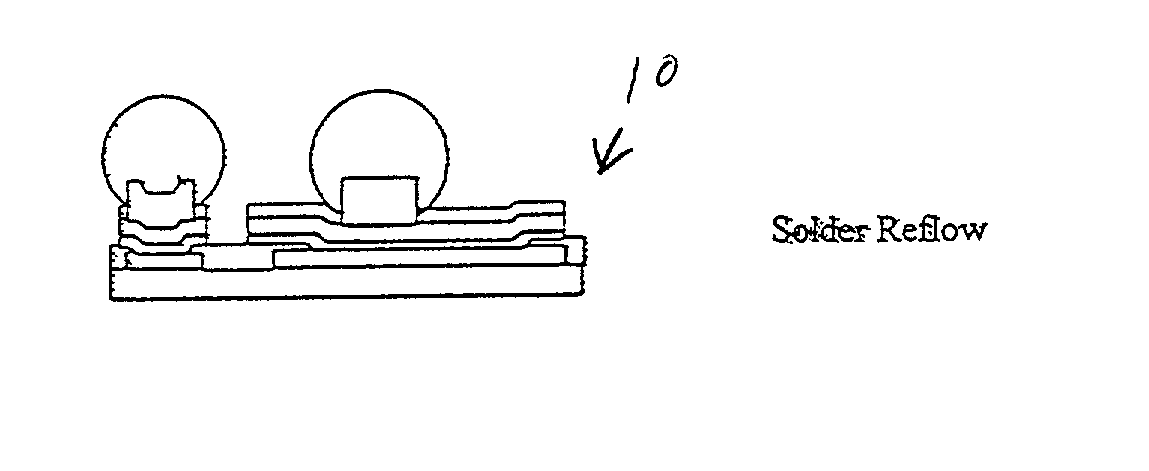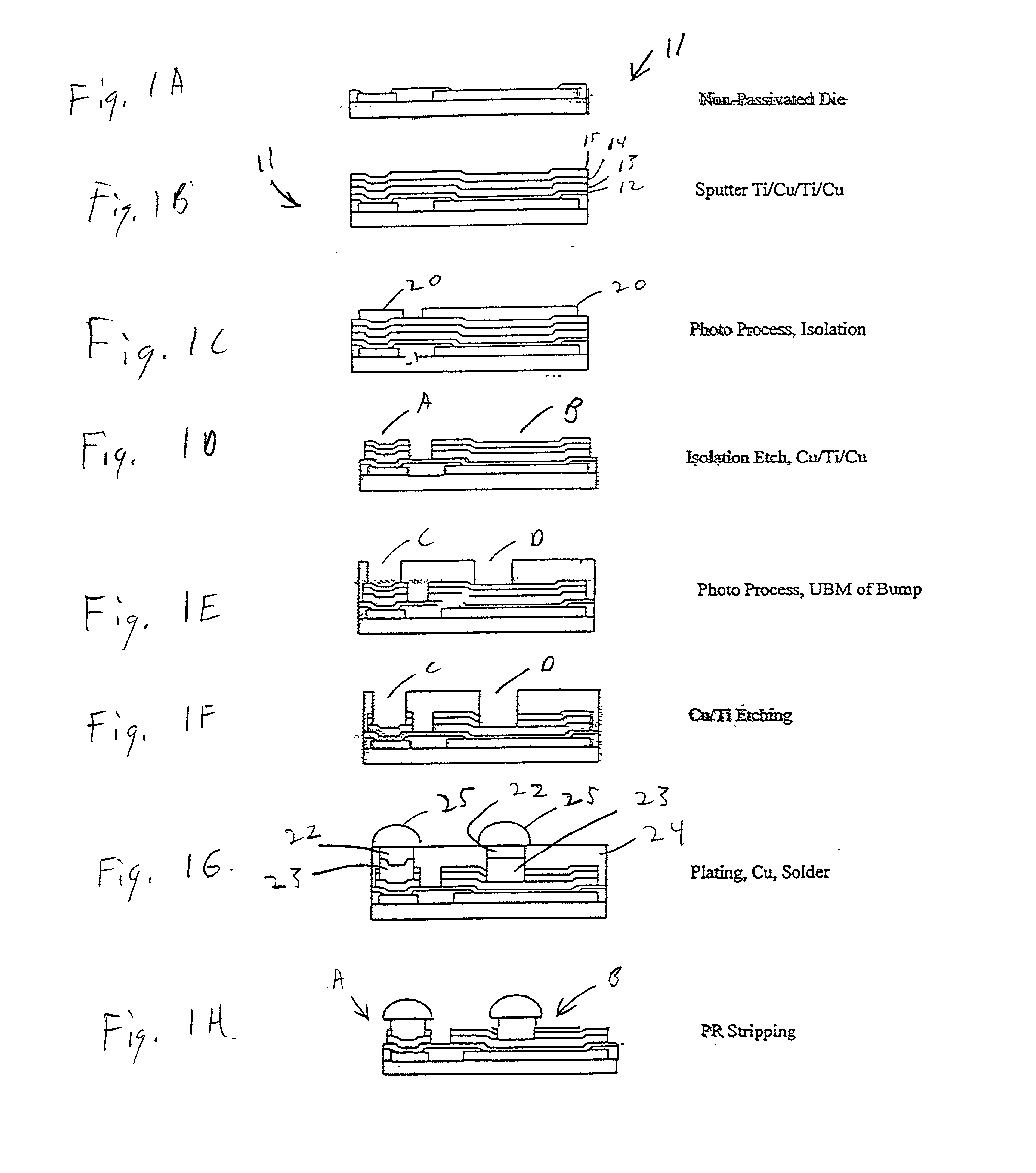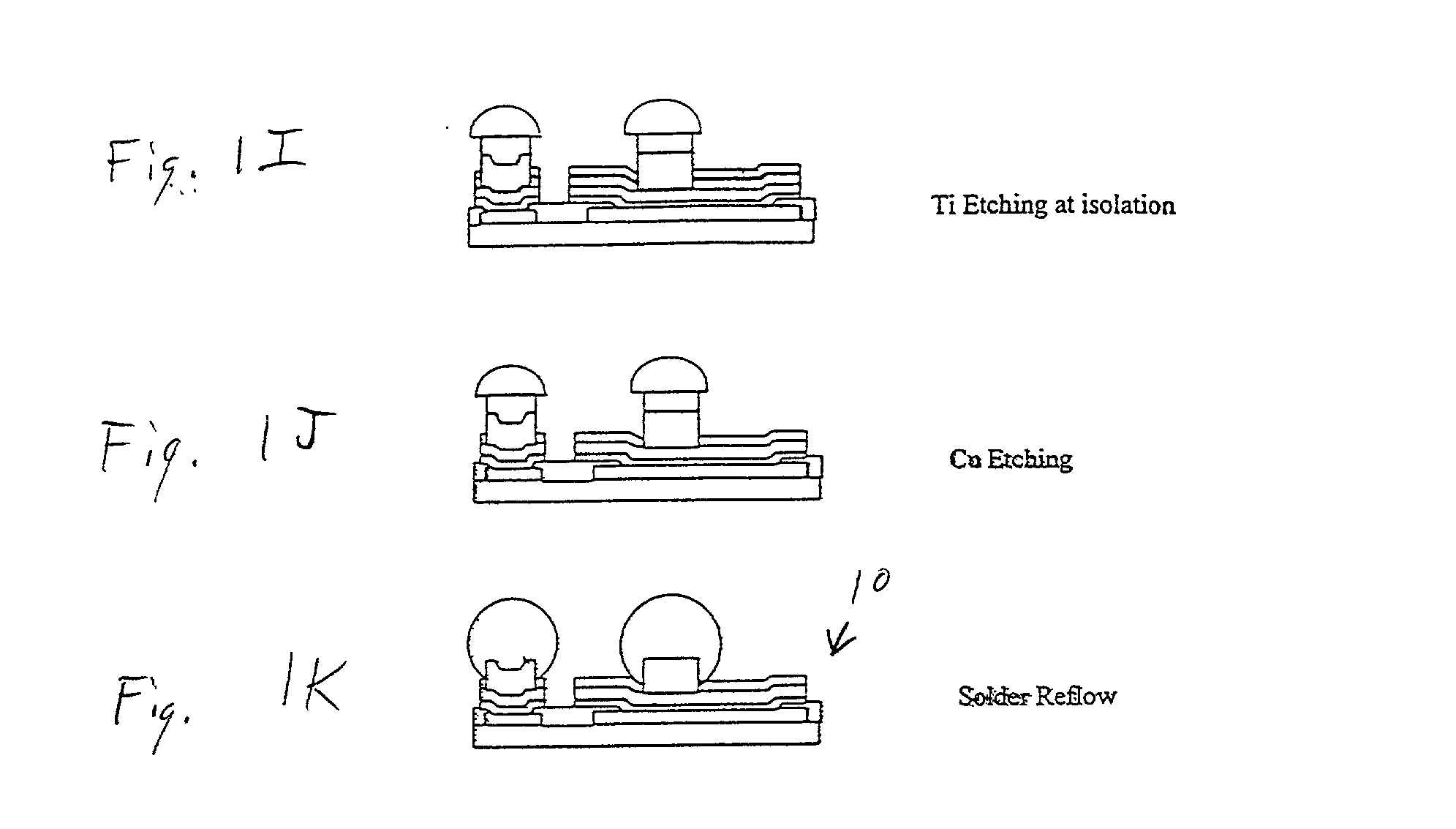Passivation scheme for bumped wafers
a technology of bumped wafers and passivation schemes, which is applied in the direction of semiconductor devices, electrical equipment, semiconductor/solid-state device details, etc., can solve the problems of increased processing expanse, extra steps, and expensive planarization process in wafer manufactur
- Summary
- Abstract
- Description
- Claims
- Application Information
AI Technical Summary
Problems solved by technology
Method used
Image
Examples
Embodiment Construction
[0011] FIG. 1K schematically illustrates a bumped wafer 10 in accordance with the present invention. The bumped wafer includes a non-passivated die and various layers of material deposited thereon. Additionally, the bumped wafer includes solder bumps.
[0012] Turning to FIG. 1A, a non-passivated die 11 is illustrated. FIG. 1B illustrates the non-passivated die with a first layer of titanium 12 sputtered thereon, a first layer of copper 13 sputtered on the first layer of titanium, a second layer of titanium 14 sputtered on the first layer of copper, and a second layer of copper 15 sputtered on the second layer of titanium.
[0013] Turning to FIG. 1C, a photo resist material 20 is placed over the second layer of copper for isolation purposes. FIG. 1D illustrates the etching away of the photo resist layer along with the second layer of copper, the second layer of titanium and the first layer of copper between region A and region B that are to be isolated. Photo resist material 21 is then p...
PUM
 Login to View More
Login to View More Abstract
Description
Claims
Application Information
 Login to View More
Login to View More - R&D
- Intellectual Property
- Life Sciences
- Materials
- Tech Scout
- Unparalleled Data Quality
- Higher Quality Content
- 60% Fewer Hallucinations
Browse by: Latest US Patents, China's latest patents, Technical Efficacy Thesaurus, Application Domain, Technology Topic, Popular Technical Reports.
© 2025 PatSnap. All rights reserved.Legal|Privacy policy|Modern Slavery Act Transparency Statement|Sitemap|About US| Contact US: help@patsnap.com



